Fun for the Hordes: Multiplayer Flames of War
By Richard Steer
2021 is shaping up to be a big year for with the release of the remaining books in the Bagration series, and a return to the Western Front for Bulge. To celebrate some of our favorite units returning to the game, I’m considering organizing a multiplayer event for our club. I ran something similar in 2019 for the 75th anniversary of the Normandy landings, and I’ve been looking back over my notes from that day, reflecting on what worked and what could be improved for next time.
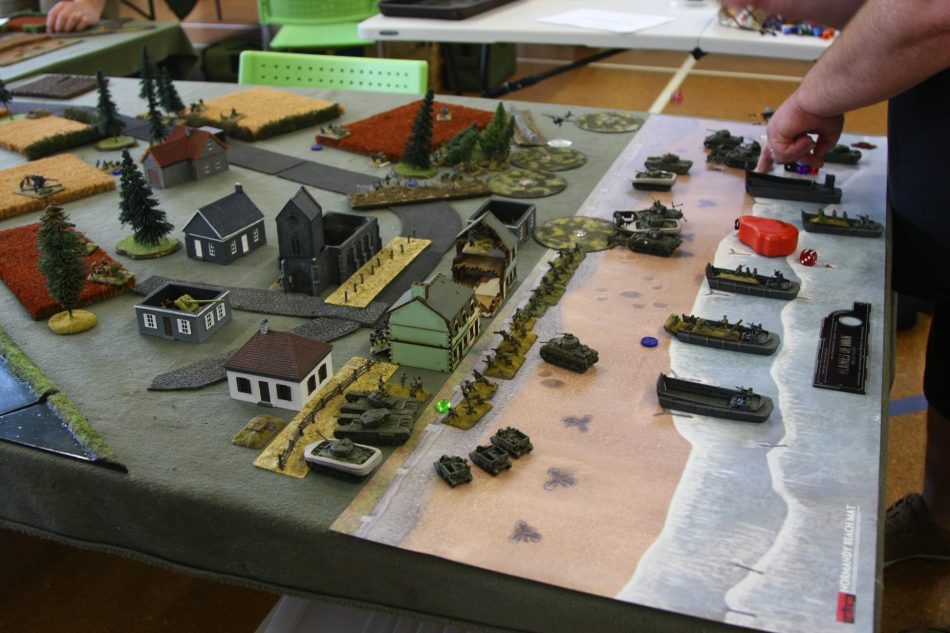
A good option for setting up a multiplayer event is to run it as a , with games played on individual tables contributing to progress on a strategic map. This is relatively straightforward and low risk. Each game in the campaign is self-contained, uses well-known and proven missions, and plays at its own pace. It is a great place to start when staging campaign events, with a range to choose from for both Flames of War and .
A riskier alternative is for all of the games to occur on a single large table. In our Normandy game the table comprised nine 6×4 boards joined together in an ‘h’-shape, covering the British in the east from Sword Beach to Caen, and the American sector from Utah Beach to Sainte-Mère-Église in the west, with the two sectors linked by a road that ran through Villers Bocage and Carentan.
The large table approach, when carefully planned, has huge potential for creating memorable games, and I would definitely use it again. The large table is very cinematic, and gives players a sense of where they are and why what they are doing matters. On the downside, it is almost inevitable that there will be parts of the table that don’t end up being used, and there are a number of complications that need to be resolved in order to make the game a success.
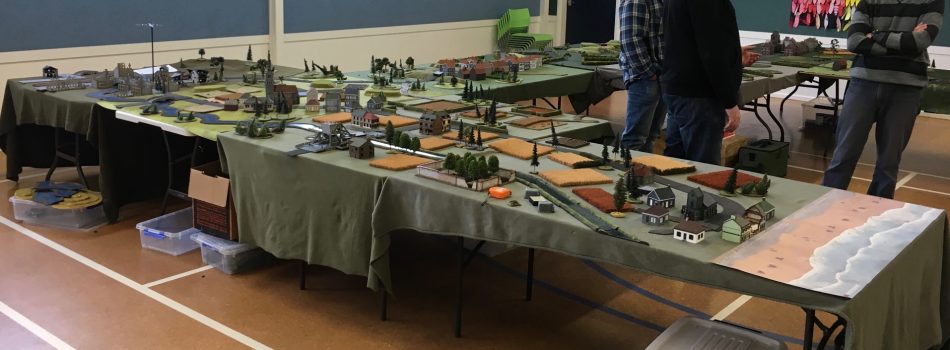
A fundamental decision is the structure of the turns. They can either be synchronized, with all players in a team making their turns at the same time, or players can be paired off to play individual games in separate locations on the table. Synchronized turns can take a long time, preventing the game from flowing as quickly as it would in a two-player game, as some people will complete their movement quickly, then have to wait for their slower teammates. In the Normandy game, we used both approaches. The morning session was specific one-on-one missions set in different parts of the board (Pegasus Bridge, the beach landings etc). The afternoon was run as a large Free For All with synchronized turns.
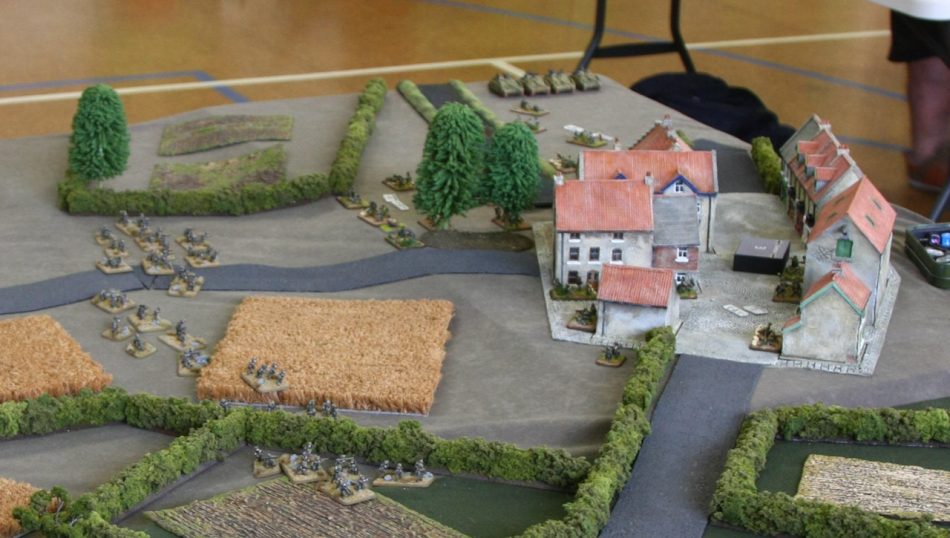
The fixed missions were by far the more successful approach in our game. To set it up, I wrote a set of scenarios based on the standard Flames of War missions, specifying deployment areas, objectives, and victory conditions. These occurred at different locations on the table, giving the players sufficient space to play their games without getting in each other’s way.
This approach definitely could have been continued into the afternoon session by having a range of scenarios prepared for the Allied team to choose from, to decide where their next attacks were going to be. Instead, the Free For All bogged down into a shootout between gun lines, with the Allies advancing just 12″ from their start lines over the course of three hours – a far cry from the wheeling game of maneuver and counterattacks that I had imagined. That is not to say that the synchronized turns couldn’t have worked.
A significant problem was that the board configuration allowed the Germans to clog a 6′ wide section of the table with three 1250pt formations (from the Flames of War 3rd Edition lists), without the Allies having any way to turn their flank. Fewer points spread over a wider frontage may have opened up the game.
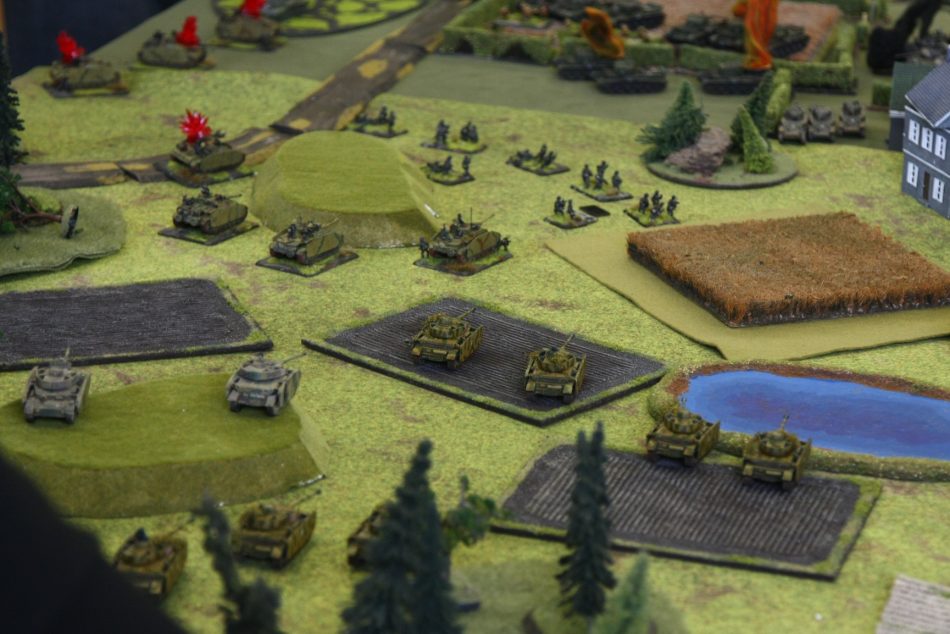
It is essential to keep all players actively involved in the game at all times and minimize the amount of waiting around that people do. The key to this is to not feel constrained to a linear timeline. Missions that should occur sequentially, e.g. a river crossing assault and the subsequent exploitation, can be played at the same time, with the final result of the campaign being determined by the combination of the results.
Any successes that would delay the attacker such as a bridge demolition can have that delay reflected through a combination of victory points and additional reserves for the defender, allowing the players to start rolling dice again immediately.
Another area where time can be saved is reserves. Rather than units spending half the game trudging across the table at 8″ per turn, the assumption can be made that motor transport is available for reserves, and implement a “super road dash” move where road travel is infinite as long as you remain more than 16″ away from all enemy teams at all points along the road. Reserves can then make an immediate impact on the game, and cutting the road to isolate part of the battlefield could become important.
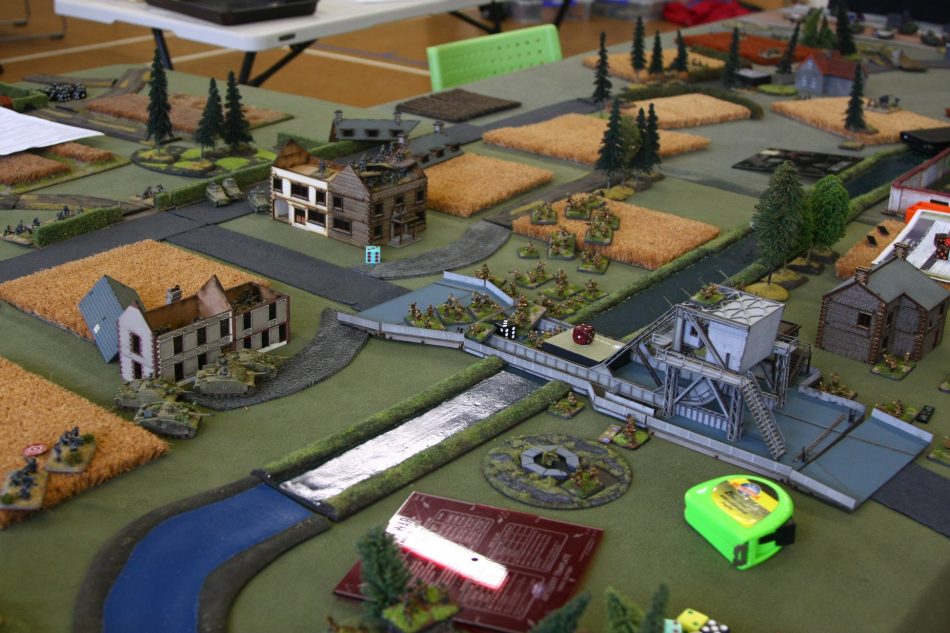
I would encourage you to try to capture the essence of the historical scenario you are playing. This can mean a few items of characteristic terrain that give the game its sense of location, e.g. Pegasus Bridge, the church of Sainte-Mère-Église, the bocage. Consider special rules that influence how the players will use their forces.
We allowed destroyed Allied tank platoons to respawn as reserves, which resulted in an Operation Goodwood situation where the British kept feeding a seemingly never-ending stream of tanks into the German defenses in front of Caen to try and break them through attrition, while conserving their irreplaceable infantry.
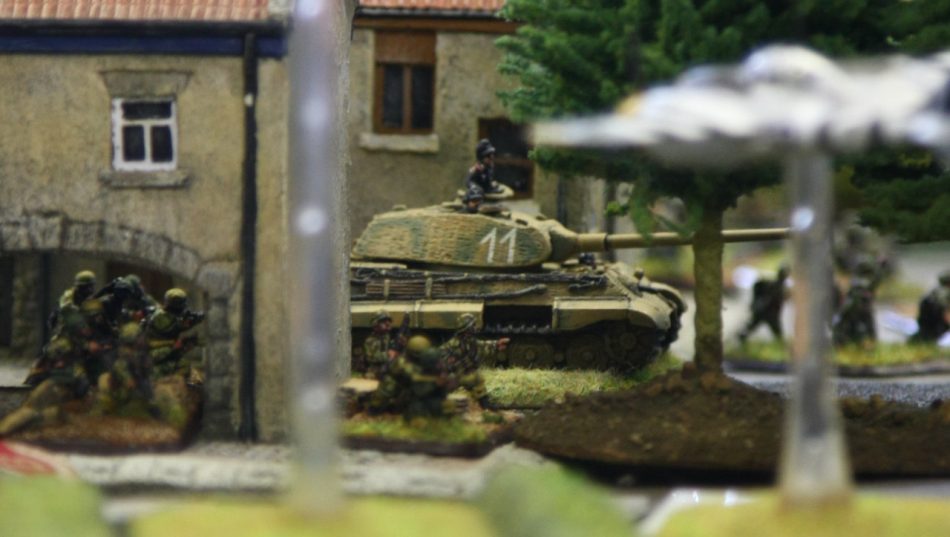
A final practical note would be on terrain. Sketch out the layout well ahead of time so you know what will go where, and how much road you need (50′ in our case). Share the load among your players as much as possible by finding out what terrain they have in their collections, and then giving them a particular area of the board to provide and set up. This helps give each location on the table a visual coherency.
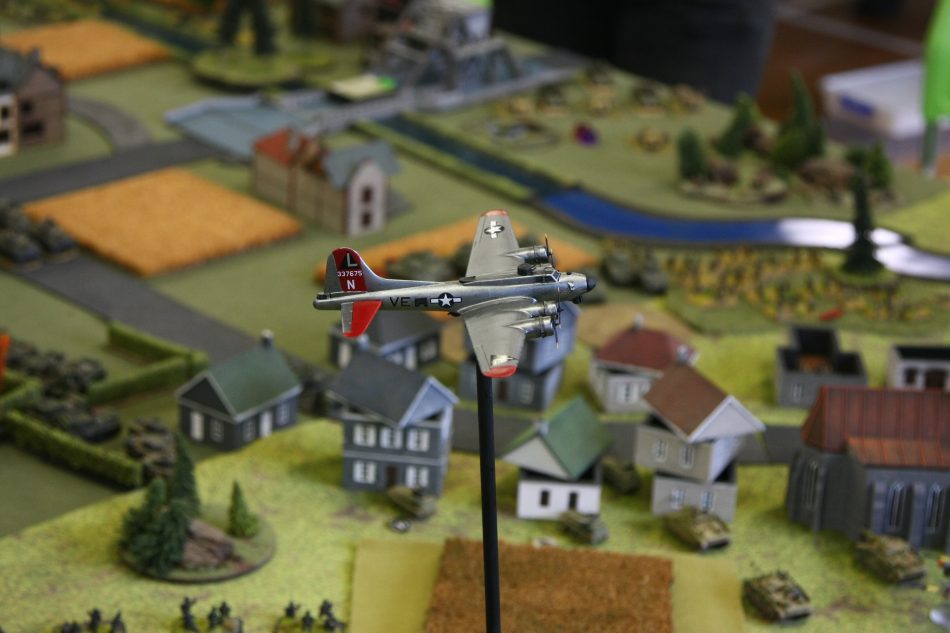
Multiplayer games can be great for building community, especially if the players get into the spirit of the event, work together in their teams, and get the banter going in the lead up to the day. If your gaming group hasn’t run one, I definitely encourage you to give it a go. The Firestorm campaigns are an excellent resource that make them really easy to organize, but do not be afraid of trying something more ambitious with a game on a big table.
Editor’s Note: Richard Steer is one of our newest writers who joins us from New Zealand, the home of Battlefront!

And there you have the issue with flames of war. Point values.
If you’re going to do this you have to use the historical OB’s
Our main issue was not related to the decision to use points-based lists, but rather the withdrawal of our US infantry player a day or so before the event. That upset a few of my plans, for example having to sacrifice a Villers-Bocage scenario in the morning in order to have an Allied player available to run the Utah landing, and forcing the US forces for the bocage fighting in the afternoon to be too tank-heavy.
Rather than going with historical orders of battle, an improvement would have been to restrict the number of tank formations that the Germans could use, or impose special rules that would penalise them for running too many tanks, like forcing them to start in reserve. As it was they had three out of their five formations as Panzer IVs or StuGs.
Great report. I like the extended road dash rules. Welcome to the NDNG team!
Thanks Tom!
Great report. Love to hear how you’ve thought all these things out.
Thinking back to the all the group games I’ve run, I had some bad ones ( I forgot the boats at home for a Nam riverine game!) and some good ones.
Over time, I transitioned to games where I ignored points and used historical OOBs (modified, of course).
The games had a reasonable number of units so that I supplied all the forces for each side (or had a super-reliable player help). I did this so that if a critical player dropped, we didn’t lose his critical forces, too.
We didn’t add forces to the planned units if more players showed up. Instead, each player commanded slightly fewer units. Sides didn’t become unbalanced, everybody could join in, and the fewer number of units per player offset the natural time drag that comes from having more players.
We could also get the games finished in an afternoon, too!